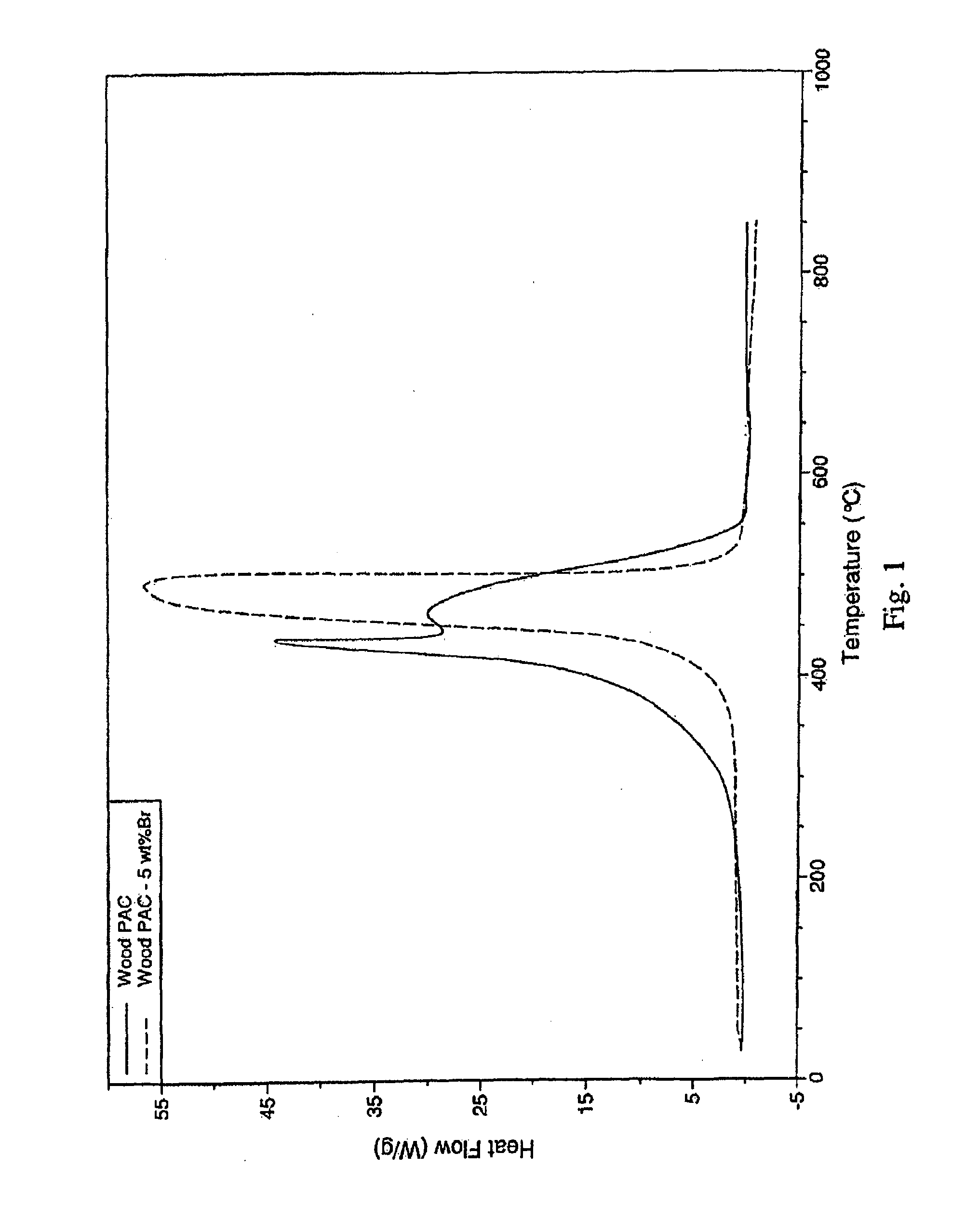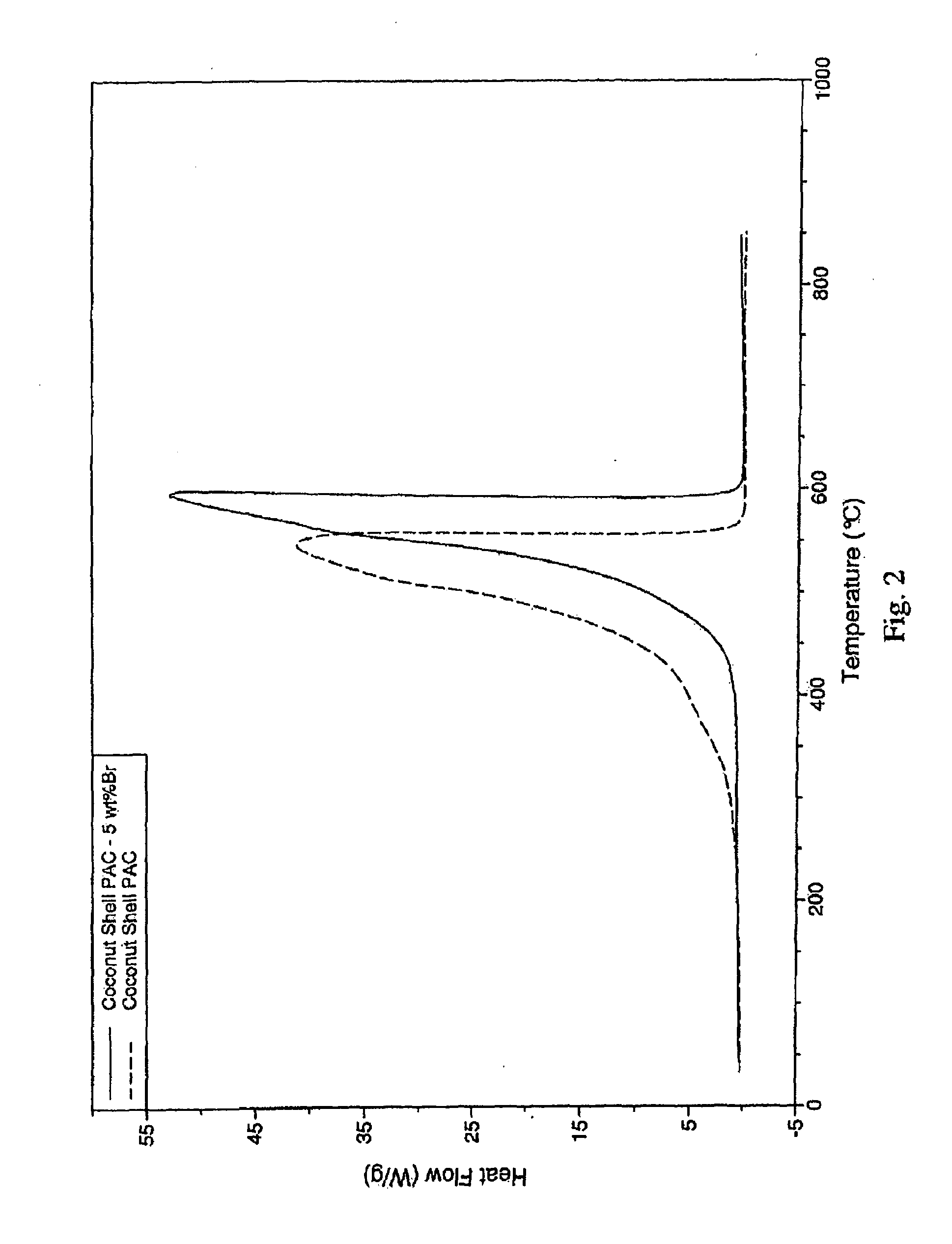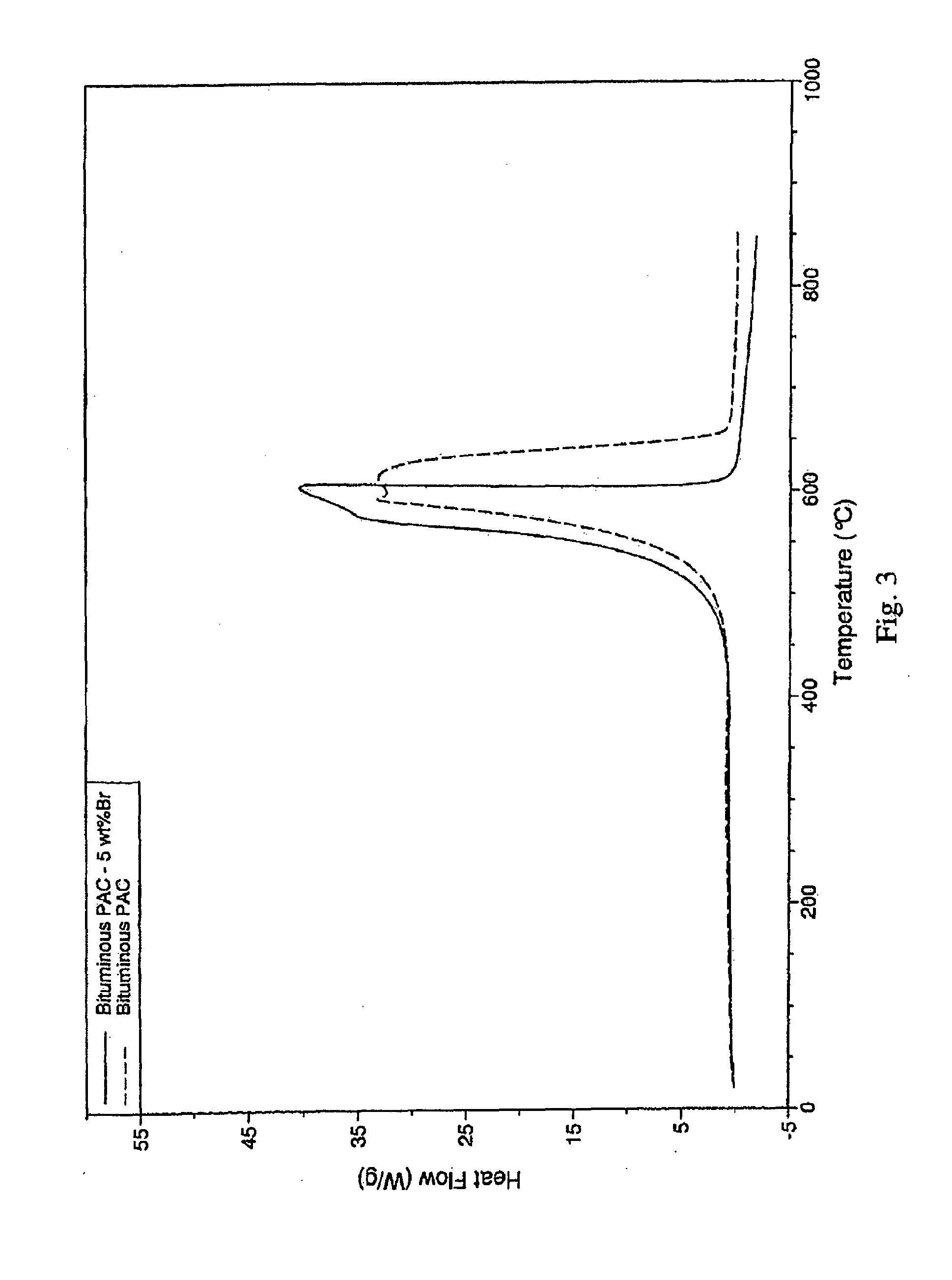Self-ignition resistant thermally-activated carbon
a cellulosic-based carbon, self-ignition resistance technology, applied in the direction of dispersed particle separation, separation process, products, etc., can solve the problems of difficult direct mechanical removal of any specific gaseous component from a gas stream, other substances that do not lend themselves to direct mechanical removal, and other problems, to achieve the effect of enhancing the thermal stability of halogen and/or halogen-containing compounds, good, acceptable, and thermal stability
- Summary
- Abstract
- Description
- Claims
- Application Information
AI Technical Summary
Benefits of technology
Problems solved by technology
Method used
Image
Examples
Embodiment Construction
[0014]The thermally-activated cellulosic-based carbons of this invention can be, as before noted, derived from cellulosic materials.
[0015]The production of thermally-activated cellulosic-based carbons, e.g., wood-based PACs, is well known and generally entails (i) devolatization or carbonization of the cellulosic material to produce a char, (ii) activation of the char and (iii) cooling / quenching of the activated char. For more detail see, Kirk-Othmer Encyclopedia of Chemical Technology, 1st Edition, Volume 4, pages 741-761 2001. The thermally-activated wood-based carbon can be produced from any wood source, such as sawdust, woodchips, or other particulate wood products.
[0016]Thermally-activated cellulosic-based carbons are commercially available. For example, thermally-activated wood-based carbons can be obtained from MeadWestvaco Corporation, Specialty Chemical Division. Thermally-activated cellulosic-based carbons can be characterized by their particle size distribution (D10, D50 ...
PUM
| Property | Measurement | Unit |
|---|---|---|
| Temperature | aaaaa | aaaaa |
| Temperature | aaaaa | aaaaa |
| Temperature | aaaaa | aaaaa |
Abstract
Description
Claims
Application Information
 Login to View More
Login to View More - R&D
- Intellectual Property
- Life Sciences
- Materials
- Tech Scout
- Unparalleled Data Quality
- Higher Quality Content
- 60% Fewer Hallucinations
Browse by: Latest US Patents, China's latest patents, Technical Efficacy Thesaurus, Application Domain, Technology Topic, Popular Technical Reports.
© 2025 PatSnap. All rights reserved.Legal|Privacy policy|Modern Slavery Act Transparency Statement|Sitemap|About US| Contact US: help@patsnap.com



